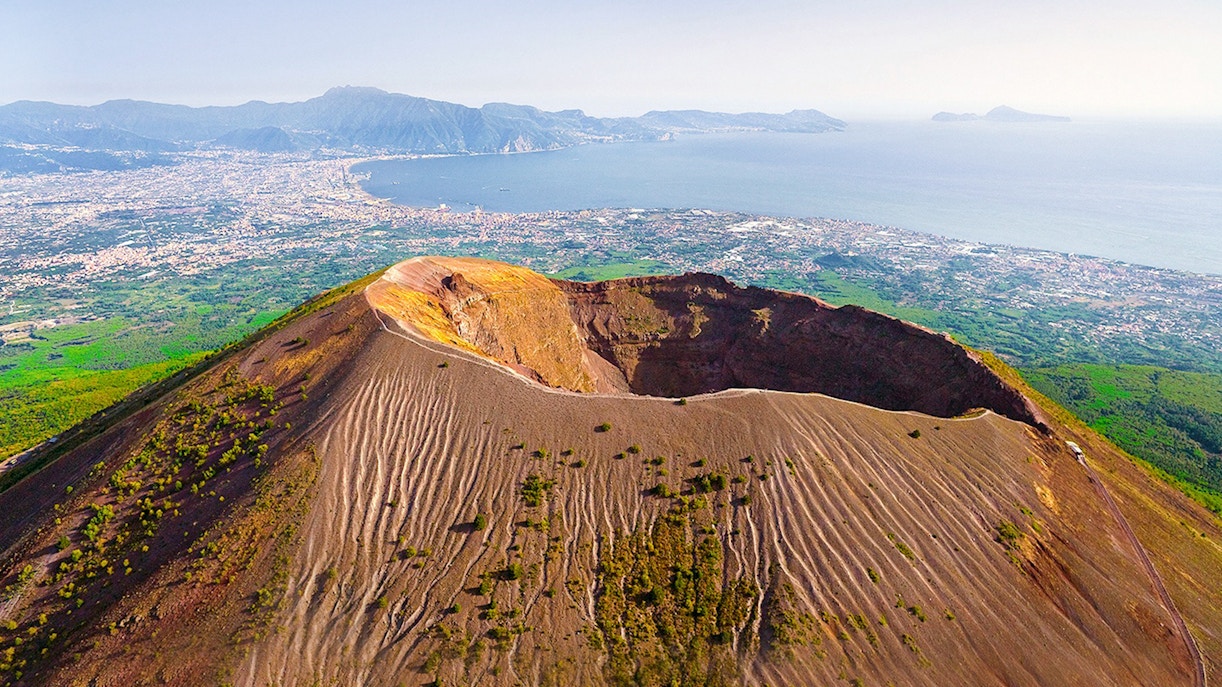- Size: Larger, more spread out
- Burial type: Covered in ash and pumice
- Highlights: Forum, amphitheater
- Atmosphere: Bustling city feel
What to do at Mount Vesuvius?
🌋 Walk the rim of an active volcano
Hike up to the summit of Mount Vesuvius, the only active volcano on mainland Europe. At 1,281 meters, you’ll stand on the edge of a massive crater and witness steaming fumaroles—raw proof of the Earth's power.
🌄 Enjoy beautiful views of Naples, Capri and more
Enjoy sweeping vistas of Naples, the Bay of Naples, Capri, and Pompeii from the crater rim. The combination of sky, sea, and volcano creates an unforgettable panorama.
🕰️ Learn about ancient Roman history
Step onto the site of the infamous AD 79 eruption that froze Pompeii and Herculaneum in time. Vesuvius connects you directly to one of the most tragic events in Roman history.
🍷 Sip wine from volcanic soil
Take a vineyard tour and taste wines like Lacryma Christi, grown in Vesuvius’s mineral-rich soil. Expect local delicacies, cellar visits, and a true flavor of the region’s heritage.
🏛️ Explore Pompeii & Herculaneum
No visit to Vesuvius is complete without exploring Pompeii and Herculaneum. These UNESCO World Heritage Sites, buried by the AD 79 eruption, offer a fascinating look into ancient Roman life with remarkably preserved structures and artifacts.






